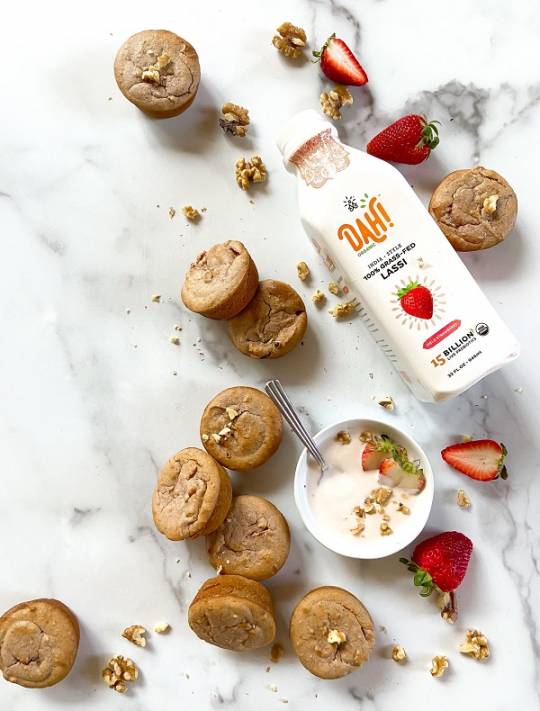Even though influencer marketing is a rather new concept in the marketing sphere, it has quickly established itself as the one of the best marketing tactics for digital marketers to keep in their arsenal. In fact, according to Google Trends, the popularity of influencer marketing has already transcended that of print marketing and is nearly as populous as video marketing.
However, that’s not all. Matter survey reveals that approximately 82% of consumers find influencers more helpful and trustworthy than brands. This is mainly because consumers perceive influencer marketing as being more authentic since it involves third party promotion of brands. As such, it drives more sales than the conventional marketing techniques, given that it’s not outright promotional. Case studies have shown that influencer ads for prospecting do better than brand ads by 20-50% across various consumer categories like consumer packaged goods, lifestyle, fashion, beauty, and health & wellness.
But, what if I told you there is a way to improve the effectiveness of your influencer marketing strategy! That would be cool. Right? Well, the fact that you are reading this article means you understand that to keep up with the savviest marketing strategies you need to amplify your influencer content. But how do you do that? Well, the answer is simple: utilize influencer whitelisting.
Below is a quick guide to influencer whitelisting.
Table of Contents
What Is Influencer Whitelisting?

Influencer whitelisting is the process of influencers and creators granting brands access to advertise on their social media accounts. This process allows various brands to work with influencers who create compelling content and connect with an audience that is receptive to recommendations on social media platforms.
In a nutshell, influencer whitelisting is a term used to refer to the process through which the influencer grants advertising access to their Facebook page and Instagram account, allowing brands to optimize paid media behind influencer content.
These permissions can be granted manually via Facebook’s Business Manager or via the use of whitelisting providers. Upon an influencer giving consent, their Instagram account and Facebook page identities will be readily available for advertisers directly in their Facebook ad manager. At that point, the advertisers can begin running dark posts.
What are the Benefits of Influencer Whitelisting?
Influencer whitelisting gives brands that are poised to succeed a platform to tap into influential voices to tell a story about their brand in such a way that it resonates with the consumers. Here are some of the benefits of influencer whitelisting:
- It gives brands a powerful way of amplifying influencer content: Whitelisting enables you to boost influencer content with the intent to drive and measure results for your campaigns.
- It allows you to build a lookalike audience from your influencer’s first-party data. As such, it enables you to reach new audiences who are likely to become customers.
- It enables you to bring the best media practices to your influencer content: Influencer whitelisting gives you a leg up when it comes to gaining consumer attention. It does this by giving you a ton of content to test. For instance, it allows you to interweave brand creative with influencer creative within one video or carousel.
- It gives you complete control over targeting: By applying your media strategy to the influencer channel, you can be confident that you are reaching your preferred target audience. Moreover, you can also tap into the audience of the influencer and create high-affinity lookalikes.
- It gives you valuable insight into how influencers get paid and how organic posts perform relative to each other. It allows you to create influencer dark posts: These posts will enable you to create numerous variations targeted at different audiences without the worry of cluttering your influencer’s feed.
What are the Challenges of Influencer Whitelisting?
Given that influencer whitelisting is still an evolving concept, it has some challenges that you should be aware of:
- The process of whitelisting permissions can be tedious: It usually varies depending on several factors. These include whether the influencer has a business manager, the type of account setting (is it a creator account or a business profile account) and whether the influencer grants permission via Facebook or Instagram. Also, you should plan to spend at least 30 minutes live with each influencer to get set up.
- Contract language confusion: There are instances when poorly written contracts fail to give clear guidance on advertising and whitelisting permission terms, leaving room for disagreements and even lawsuits.
- Information asymmetry: Whitelisting can cause tension between influencers and brands, since brands can run ads through their accounts, limiting an influencer’s control and visibility of what is happening with their identity.
How Does Whitelisting Benefit Influencers and Creators?
It’s not only brands that benefit from whitelisting; below are some of the benefits influencers and creators accrue from it.
- Improved reach: The influencer benefits from amplified influencer content by getting a higher reach. This can prove helpful in growing their personal brand.
- More engagement: Whitelisting results in greater reach of posts, leading to more people engaging with the influencer.
- Growth in fanbase: If the posts are attractive and engaging enough, they will boost the visibility of an influencer such that they can generate a larger fanbase quickly.
- Develop long-lasting relationships: Most often than not, when executed correctly whitelisting results in a win-win situation for both brand and influencer. While the former benefits from improvements in ROI, the latter acquires an even larger following. This mutually beneficial relationship can lead to the development of a long-term professional partnership.
How to Execute Influencer Whitelisting on Each Social Media Platform?
Instagram and Facebook are the two social media accounts that marketers use to execute influencer whitelisting. To whitelist influencers on Instagram and Facebook, you need to have whitelisting permissions from influencers and creators via Facebook Business Manager. The influencer must have a Facebook Business Manager account that is linked to either their Instagram handle or Facebook page.
Marketers can use their Business Manager and request to add an influencer as a business partner. The influencer will need to give you their Business Manager ID or the links to their Instagram account or Facebook page. The moment they accept your request, you’ll be able to use their accounts for your whitelisted ads.
How Do You Measure Whitelisting Results?
Influencer whitelisting is a potent marketing tool. It’s as simple as someone influential telling their audience that your brand is suitable for their needs—however, it’s not always easy to measure the effectiveness of this marketing strategy. Thankfully, there are ways to assess the efficacy of influencer whitelisting.
For starters, don’t be fixated on the number of followers an influencer has. This is because often the number of followers does not translate directly to the amount of influence and engagements. Remember, reach has merit, but the number of quality engagements has more bearing on the success of your marketing.
For instance, if marketing influencer A has 500,000 followers and gets 5000 engagements per post and influencer B has 100,000 followers and 50000 engagements per post, you are better off working with influencer B to promote your brand. This is because despite having fewer followers, marketer B has more influence.
Even so, you should be cautious because some influencers buy engagement. You can spot such malpractices by using influencer marketing software tools to make sure that the results shown by an influencer are genuine. Also, as you get more experienced working with influencers, you can spot influencers who buy followers or engagement based on their various account metrics and the quality of content they post.
What Other Tactics Can Be Combined With Influencer Whitelisting?
While we have already established that influencer whitelisting is a sound marketing strategy, combining it with the following best practices will ensure that your marketing efforts bring forth even greater rewards:
- Use video content when marketing: This content provides a creative way of showcasing your brand. Moreover, video content is known to generate more engagement.
- Use static posts: You cannot whitelist with carousel posts. You should therefore ensure that your influencers use static posts.
- Increase the ad run time: Shoot for at least 15 days for standard ads.
- Optimize influencer testimonial: Allow influencers to use their natural tone when presenting your product. This ensures that your brand is presented in different unique voices. You should, however, ensure that the influencer gets the story right and the message is correct.
Conclusion
To wrap up, influencer whitelisting is one of the best ways of increasing your return on investment on influencer partnerships. That said, it is imperative that you partner with the right influencers that fit with your brand identity.
If you’re looking for help with influencer whitelisting, contact us for a discovery call.





